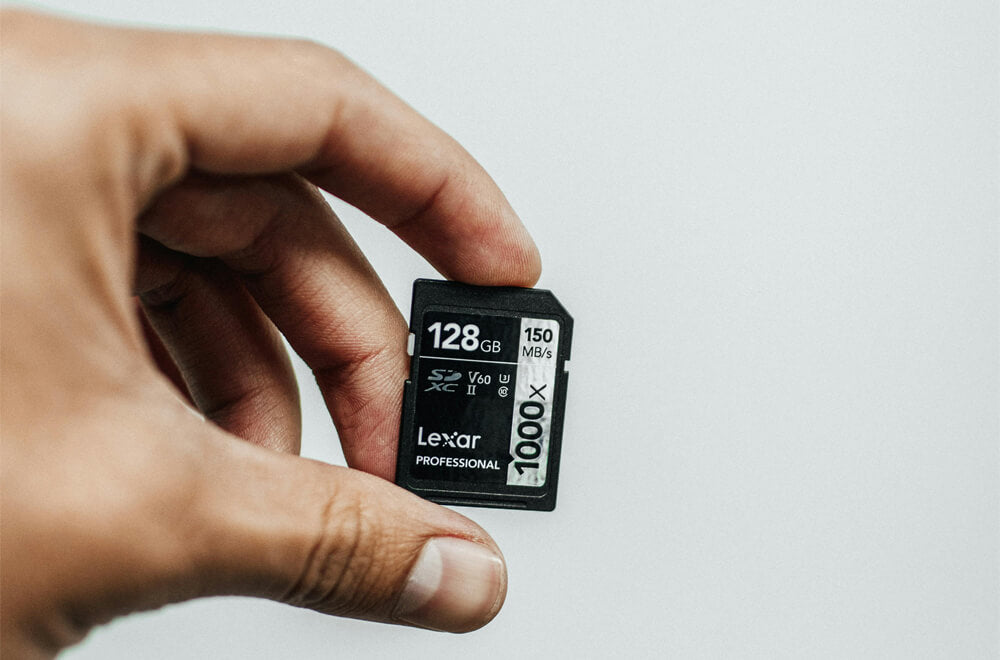
How to Choose the Right SD Card in 2024
Surveillance cameras are more than just a tech trend; they're a cornerstone of home and business security today. But there's more to a surveillance system than just cameras. You also need the right storage solutions to keep your data secure and readily available. In this blog, we'll dive into how to pick and care for the SD card to keep your surveillance cameras operating smoothly.
Contents
- Why Opt for Local Storage
- How to Choose the Right SD Card for Your Camera
- 5 Tips for Effective SD Card Maintenance
Why Opt for Local Storage
Deciding where to store your surveillance footage isn't just a technical choice—it's about peace of mind. While cloud storage provides the convenience of remote access and large-scale data management, there's undeniable comfort in using local storage like an SD card.
Deciding where to store your surveillance footage isn't just a technical choice—it's about peace of mind. Sure, cloud storage has its perks with easy access from anywhere, but there's undeniable comfort in using local storage like an SD card. Here's why:
- Data Control: By storing data locally on SD cards, all records remain directly under the user's control, unaffected by external service interruptions, and are more secure in terms of privacy.
- Operational Reliability: Local storage guarantees that your surveillance system continues to function even in areas with poor network connectivity.
- Scalability: Need more space? Just pop in a bigger SD card and you’re set—no hidden fees or complex setups and do not incur the additional costs associated with cloud storage.
How to Choose the Right SD Card for Your Camera
Selecting the correct Micro SD card is key to ensuring the efficiency and reliability of your surveillance system. Consider the following key aspects when selecting an SD card:
Camera Compatibility
It is crucial to check which type of SD card your camera supports. For example, Litokam cameras support SD cards in FAT32 and exFAT format, but if you have an NTFS-formatted card, you will need to reformat it to FAT32 for compatibility. This step is critical as an incompatible file system could prevent the camera from properly reading the SD card, thereby affecting video storage and playback functions.
Note: Litokam cameras currently do not support NTFS formatted SD cards larger than 32GB.
Storage Needs Assessment
Determine the required storage capacity, which typically depends on the resolution and duration of the recording. According to Litokam's R&D department tests, recording 1080p video continuously for 24 hours consumes approximately 9.4GB of storage, while recording 2K video requires 3.6G of storage space.
Speed Class Selection
To ensure seamless video recording without frame drops, it's essential to select an SD card with adequate write speed. We recommend opting for a Micro SD card specifically designed for camera usage, which offers a write speed exceeding 20 MB/s.
Durability Considerations
Opt for high-endurance or industrial-grade SD cards designed for surveillance, capable of operating reliably under harsh conditions.
5 Tips for Effective SD Card Maintenance
While using SD cards for data storage in surveillance systems is convenient, appropriate maintenance and management are necessary to ensure data security and the longevity of the SD card. Here are some key maintenance and management tips:
#1 Formatting the SD Card
For newly purchased SD cards or those that have not been used for a long time, it is recommended to format them before use. Litokam users can complete the formatting of the SD card in the Litokam APP:
Step 1. Open the App and go to the live stream page, then tap "..." at the top right of the screen button to go to "Settings" > "Storage Settings" page.
Step 2. Tap on "Format" to format the SD card.
Note: Formatting the SD card will erase all previously stored video data. Ensure you have backed up any important files before proceeding with the format.
#2 Regular Inspection and Cleaning
Periodically check the storage space and health status of the SD card. Remove unnecessary video files to free up space and prevent write errors when the SD card is full.
#3 Backup Video Data
Implement a robust data backup strategy. Do not rely solely on one SD card for storing all important videos. Regular backups to an external hard drive, network storage device, or cloud service can safeguard your data.
#4 Protection Against Physical and Electronic Damage
Handle SD cards with care. Avoid use in extreme conditions and ensure the camera is off before removing the SD card to prevent damage during data writing.
#5 Troubleshooting
If the SD card cannot be read by the camera or shows data errors, test it on another device to check if it can be recognized. If the issue persists, consider using professional data recovery software.
Conclusion
A great surveillance system needs a solid foundation, and that starts with the right SD card. By choosing carefully and maintaining it well, you can rely on your system to capture everything you need, exactly when you need it.